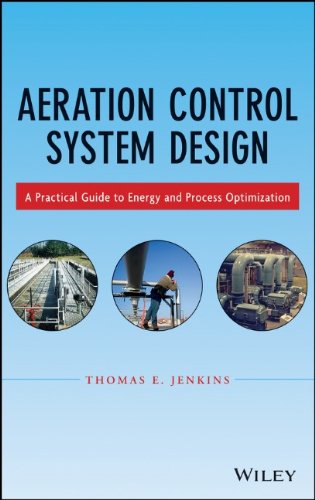

Most ebook files are in PDF format, so you can easily read them using various software such as Foxit Reader or directly on the Google Chrome browser.
Some ebook files are released by publishers in other formats such as .awz, .mobi, .epub, .fb2, etc. You may need to install specific software to read these formats on mobile/PC, such as Calibre.
Please read the tutorial at this link. https://ebooknice.com/page/post?id=faq
We offer FREE conversion to the popular formats you request; however, this may take some time. Therefore, right after payment, please email us, and we will try to provide the service as quickly as possible.
For some exceptional file formats or broken links (if any), please refrain from opening any disputes. Instead, email us first, and we will try to assist within a maximum of 6 hours.
EbookNice Team

Status:
Available0.0
0 reviewsLearn how to design and implement successful aeration control systems
Combining principles and practices from mechanical, electrical, and environmental engineering, this book enables you to analyze, design, implement, and test automatic wastewater aeration control systems and processes. It brings together all the process requirements, mechanical equipment operations, instrumentation and controls, carefully explaining how all of these elements are integrated into successful aeration control systems. Moreover, Aeration Control System Design features a host of practical, state-of-the-technology tools for determining energy and process improvements, payback calculations, system commissioning, and more.
Author Thomas E. Jenkins has three decades of hands-on experience in every phase of aeration control systems design and implementation. He presents not only the most current theory and technology, but also practical tips and techniques that can only be gained by many years of experience. Inside the book, readers will find:
Throughout the book, example problems based on field experience illustrate how the principles and techniques discussed in the book are used to create successful aeration control systems. Moreover, there are plenty of equations, charts, figures, and diagrams to support readers at every stage of the design and implementation process.
In summary, Aeration Control System Design makes it possible for engineering students and professionals to design systems that meet all mechanical, electrical, and process requirements in order to ensure effective and efficient operations.Content:
Chapter 1 Introduction (pages 1–20):
Chapter 2 Initial System Assessment (pages 21–48):
Chapter 3 Aeration Processes (pages 49–76):
Chapter 4 Mechanical and Diffused Aeration Systems (pages 77–112):
Chapter 5 Blowers and Blower Control (pages 113–160):
Chapter 6 Piping Systems (pages 161–190):
Chapter 7 Instrumentation (pages 191–232):
Chapter 8 Final Control Elements (pages 233–260):
Chapter 9 Control Loops and Algorithms (pages 261–308):
Chapter 10 Control Components (pages 309–332):
Chapter 11 Documentation (pages 333–350):
Chapter 12 Commissioning (pages 351–370):
Chapter 13 Summary (pages 371–376):